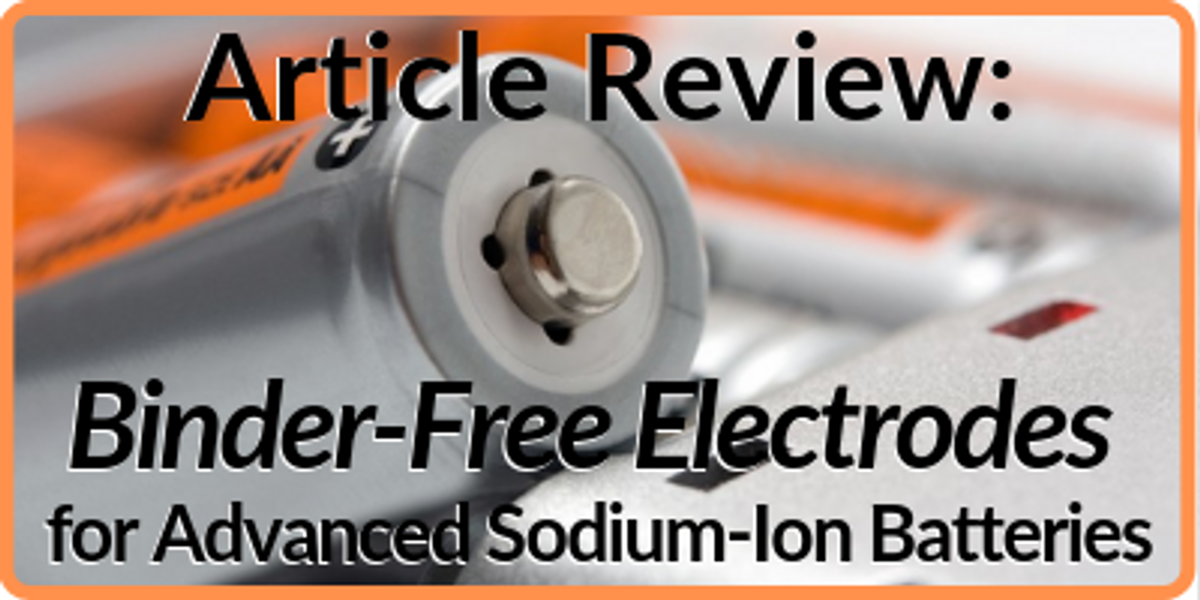Binder-Free Electrodes for Batteries: An Article Review
Sodium-Ion batteries (SIBs) are one of the promising batteries for the use of medium and large-scale energy storage because of the easy accessibility of resources to fabricate them and low production cost compared to other batteries. Also, it shows similar properties with Li batteries. The problems of SIBs are poor cycling stability and low rate performance. The reason for these problems arises from the binders which are used to integrate individual active materials with conductive additives in traditional electrodes. Since binders are electrochemically inactive and insulating, they cause reduction in performance and poor cycling stability. Moreover, these conventional binders limit the applications of SIBs because they become unstable at elevated temperatures since they are mostly polymers. Therefore, binder-free electrodes provide improved electronic conductivity and electrochemical reaction reversibility.
Binder-free electrodes are generally prepared in various ways, mainly including template-free and template-assisted methods. We will summarize these methods explained by scientists from Nankai University in their article “Binder Free Electrodes for Advanced Sodium-Ion Batteries” published in Advanced Materials (2019).
Template-Free Methods for Binder-Free Electrodes
1 - Fabrication Binder-Free Electrodes Based on Graphene
Graphene is one of the favorite materials in the energy storage field owing to high electronic conductivity, great mechanical flexibility and ultralow weight. Therefore, graphene is usually preferred in binder-free SIBs. In addition, researchers from Nankai University prepared porous graphene with defects as anode for SIBs. They used graphene oxide and ferric nitrate as precursors. The obtained electrode was directly used without any binders and conductive additives. Also, the porous structure of graphene facilities the diffusion and transfer of Na+.
Read All Applications of Graphene in this comprehensive guide to Graphene's Applications.
2 - Fabrication of Binder-Free Electrodes Based on Carbon Nanotubes (CNTs)
CNTs provide excellent flexibility and conductivity as a typical carbon material. Thus, they are combined with active materials to improve their conductivity and integrity. This binder-free electrode increases the energy density of the batteries and prevents deterioration of the electrode during sodiaton/desodiation which increases the electrochemical performance of the electrode.
3 - Fabrication of Binder-Free Electrodes Based on Carbon Nanofibers
Carbon nanofibers are obtained by electrospinning and subsequent heat treatment. Electrospinning technology provides versatility, controllability and high efficiency. The carbon obtained by decomposition of various polymers with this technology increases the conductivity of active materials which enhances the cycle performance and rate performance of the electrodes.
Template-Assisted Methods for Preparation of Binder-Free Electrodes
1 - Binder-Free Electrodes Based on Carbon-Based Substrates
Carbon-based substrates provide excellent structural stability and high electrical conductivity that is why they are commonly used to assist the preparation of binder-free electrodes. Based on the variety of carbon-based substrate, binder-free electrodes are,
Binder-Free Electrodes Based on Carbon Cloth Substrates
Binder-Free Electrodes Based on Carbon Paper Substrates
2 - Binder-Free Electrodes Based on Metal-Based Substrates
Metal-based substrates provide an excellent conductivity and structural stability, thus they are adopted to grow nanoarrays for the preparation of binder-free electrons. They act as a skeleton and current collector which enhances the cyclic performance of batteries. Ti, Cu and Ni are the most common metal substrates used in binder-free electrodes.
In summary, binder-free electrodes have been a great innovation since it provides high efficiency, high electrochemical performance and structural stability in SIBs. To synthesize binder-free electrodes, template-free and template-assisted methods are used. As a result of many experiences, it was shown that binder-free electrodes show an outstanding electrochemical performance and high cycling stability.
Recent Posts
-
Nanocomposites in Food Packaging
The utilization of nanocomposites in food packaging represents a significant advancement in the fiel …19th Apr 2024 -
What is the Difference Between 7075 and 6061 Aluminum Alloy?
When comparing 7075 aluminum alloy to 6061 aluminum alloy, it's essential to understand their disti …5th Apr 2024 -
Iron-Air Batteries: The Ultimate Guide
Iron-air batteries represent a significant breakthrough in energy storage technology, offering a sus …29th Mar 2024







